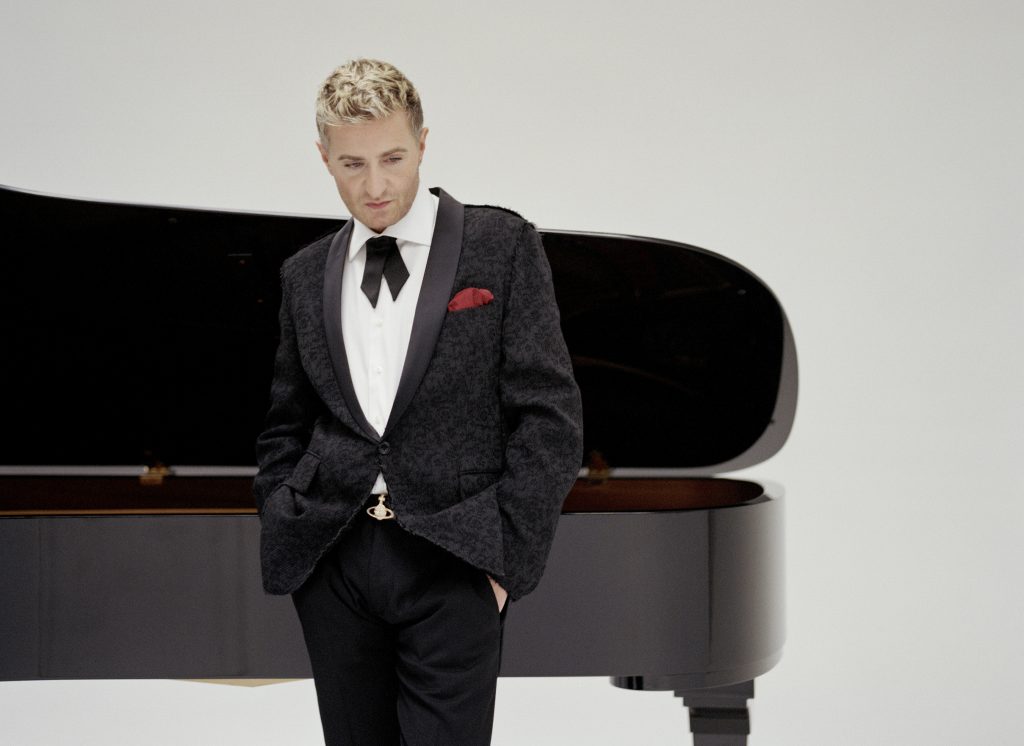Jean-Yves Thibaudet and Colleagues Champion Piano Trios at The Conrad
Whether playing concertos with the San Diego Symphony in downtown San Diego or chamber music in La Jolla, the esteemed French pianist Jean-Yves Thibaudet can be counted on fill the house. Combining brilliant technique, sophisticated interpretive flair, and an undeniable passion for performance, Thibaudet has earned a loyal following.
At Friday’s sold-out concert at The Conrad, Thibaudet, with violinist Lisa Batiashvili and cellist Gautier Capuçon, gave a transcendent account of Maurice Ravel’s 1914 Piano Trio in A Minor, one of the preeminent chamber works of the last century. From Thibaudet’s shimmering arabesques at the opening of the Piano Trio, he invited the audience into Ravel’s unique sonic wonderland. With Batiashvili’s intensely dark timbre—almost a rich viola color—and Capuçon’s soulful phrasing, these musicians elegantly traversed the composer’s stark mood swings from mystical contemplation to surging, resplendent themes that climaxed in vibrant cadences.I admired the ensemble’s excited pizzicatos in the highly charged second movement, marked “Assez vif,” and their playful navigation of the movement’s metrical puzzles suggested jazzy nonchalance. The composer played his neoclassical card with a haunting passacaglia in the third movement, and Thibaudet pulled imposing, iridescent themes from the depths of the Steinway that had the power of an entire orchestra’s contrabass section. The musicians’ immaculate ensemble built Ravel’s counterpoint into an architectural marvel, and their breathless account of his propulsive finale could not have been more triumphant or more satisfying.
Franz Joseph Haydn’s Piano Trio in E Major, a sophisticated late work (1794), graciously opened the concert. In the sparkling first movement, Thibaudet’s animated but pellucid touch set an ideal classical sonority. Especially in the movement’s complex development section, Capuçon’s driving, sculpted themes and Batiashvili’s lithe, supple phrasing proved the ideal complement. I enjoyed the trio’s sardonic edge to the minor mode melodies of the middle movement, and their congenial effervescence in the finale brought out the rondo’s indisputable optimism.
After intermission, the musicians returned to complete their program with Felix Mendelssohn’s sturdy Piano Trio in C Minor, Op. 66. Although their performance met the challenges of this sumptuous Romantic work with the prowess and acute stylistic attention they revealed in the Haydn and Ravel trios, the Mendelssohn seemed anticlimactic, a letdown from the exaltation of the Ravel. Debussy and Ravel effectively liberated European music form the domination of German Romantic musical style, and Mendelssohn’s 1845 piano trio too neatly encompassed that smug Biedermeier aesthetic. After playing the Ravel, a later work would have made stronger programming, especially the Shostakovich Piano Trio in E Mnor.
For their encore, the trio offered the finale of Antonin Dvořák’s “Dumky” Trio.
This concert was presented by the La Jolla Music Society at La Jolla’s Conrad Prebys Performing Arts Center on Friday, October 13, 2023.

